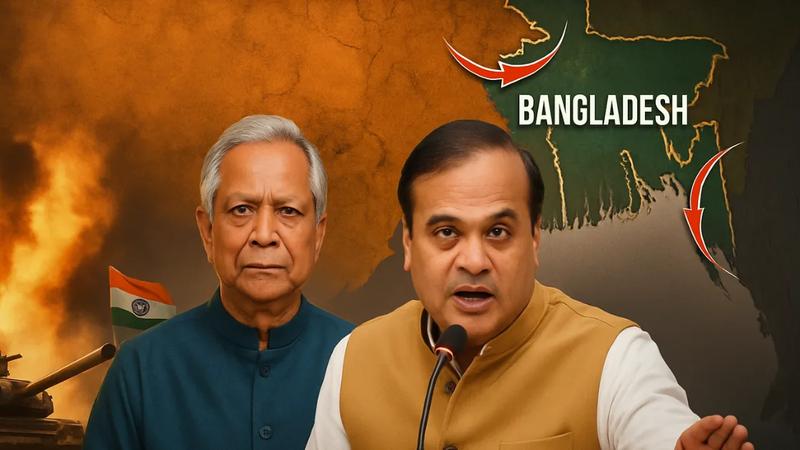India can attack Bangladesh's Chicken's Necks!! Assam CM has a Plan!!

Last week, while a lot was going on in the geopolitical space, something big flew under the radar — a bold and historic statement from the Chief Minister of Assam. For the first time ever, an Indian state leader directly and openly warned a foreign country — Bangladesh. And not just any statement — he spoke of “two Chicken Necks” in Bangladesh and hinted at what could happen if India ever decides to strike.
Let that sink in — not one, but two strategic choke points in Bangladesh are now under India’s geopolitical lens.
We’re going to break down what exactly was said, what led to this dramatic moment, and why this statement might just go down in history as a game-changer in the region.
The Chicken Neck Dilemma
For years, the Siliguri Corridor — India’s vulnerable stretch of land between mainland India and the Northeast — has been called “India’s Chicken Neck.” A critical point that, if severed in a conflict, could isolate the entire Northeast.
But here’s the twist — Bangladesh itself has not one, but two Chicken Necks — one in Rangpur Division, and the other connecting the Chittagong region. And in a fiery response to rising threats and chatter from across the border, Assam CM Himanta Biswa Sarma made it loud and clear — “If Bangladesh ever thinks of attacking Siliguri, they should be ready for what we can do to their Chicken Necks.”
And this wasn’t some offhand comment. This was a calculated geopolitical message, perhaps a response to recent provocations.
Rising Tensions and Red Flags
This isn’t happening in a vacuum.
- Reports have emerged that Chinese officials are getting more active around Bangladesh, eyeing WWII-era airfields to revive near the Siliguri region.
- Bangladeshi youth are increasingly being exposed to maps and theories of a so-called “Greater Bangladesh” in universities across Dhaka.
- A close aide of Muhammad Yunus, linked to the Bangladeshi military, openly posted about launching an attack on India’s Siliguri Corridor in sync with a Pakistani conflict, even suggesting waiting for a signal from China to start a three-front war.
These developments have rattled not just Indian citizens, but also policymakers in Delhi and regional leaders like Himanta Biswa Sarma.
India’s Response – Assertive but Measured
India has traditionally exercised restraint. But the Chief Minister’s warning is a clear sign that enough is enough.
The message was simple: "Don't mistake our silence for weakness."
India isn’t looking for conflict — but it won’t shy away if pushed.
The CM reiterated that while India has no intention of nuclear escalation or military adventurism, Bangladesh is no match in conventional warfare either. India is a regional superpower, and the world has witnessed its military precisionduring operations like Sindoor, where Pakistani airbases were wiped out despite their nuclear arsenal.
A Reality Check for Bangladesh
Let’s be real — Bangladesh is a smaller country. No nuclear power. No real air defense. If conflict were to break out, India could slice through the Rangpur or Chittagong corridors and capture strategic territory within hours.
And no, this isn’t about arrogance. This is about geopolitical realities and military math.
Yet, radical voices from across the border continue to push fantasies of launching three-front wars with Pakistan and China. Even banned extremist groups are being revived, radicalization is surging, and there are real threats emerging from within Bangladesh.
Final Thoughts – A Necessary Wake-Up Call
India doesn’t want war.
India doesn’t want to destabilize the region.
But if smaller nations, provoked or emboldened by bigger players like China, start dreaming of disrupting India’s unity, they need to know: India won’t sit quietly.
Bangladesh must recognize that any misstep — any attempt to threaten India’s Siliguri Corridor — will not go unanswered. And this time, the answer might come not just from Delhi, but straight from the Northeast — from people like Himanta Biswa Sarma, who’ve seen these threats up close for decades.
Let’s hope the message is received loud and clear.
Because India doesn’t threaten often — but when it does, the world listens.
Stay informed. Stay alert. The game of geopolitics just got hotter in the East.